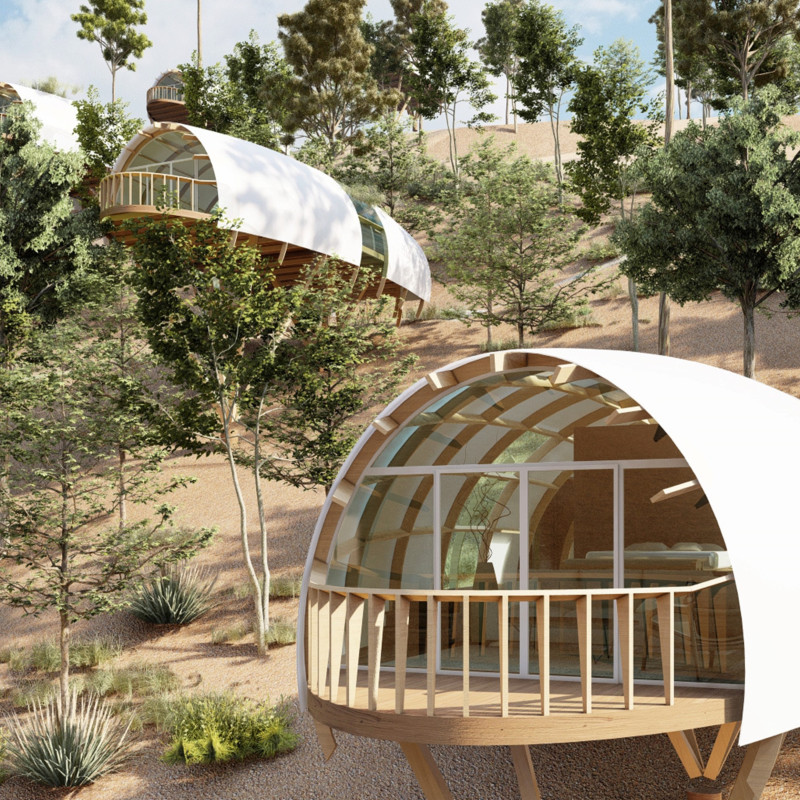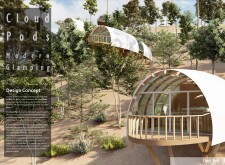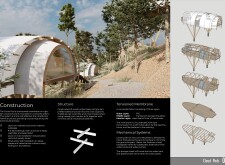5 key facts about this project
At first glance, the design reveals a harmonious integration with its surrounding context, featuring clean lines and a balance between modern design elements and the natural landscape. The façade boasts a mix of materials, such as textured concrete, reflective glass, and warm wood accents, which work together to create a visual narrative that resonates with the locality. This careful selection of materials reflects a commitment to sustainability and thoughtful craftsmanship, ensuring the structure not only enhances the visual appeal of its environment but also adheres to eco-friendly practices.
The functional aspects of the project are meticulously organized, ensuring that each space serves its intended purpose while maintaining a fluidity that enhances user experience. The layout facilitates movement and interaction, with open spaces flowing seamlessly into one another. Large windows invite natural light to penetrate deeper into the interiors, reducing the reliance on artificial lighting while fostering a connection to the outdoors. This design strategy enhances overall well-being, making the occupants feel more in tune with their surroundings.
Unique design approaches are evident throughout the project, notably in its use of modular spaces that can be adapted for various uses. This flexibility is a significant asset, allowing the building to cater to community needs, whether it is hosting events, workshops, or exhibitions. The interior design supports these functions with versatile furnishings that can be rearranged to suit different activities, thereby maximizing the utilization of space.
Another noteworthy aspect of this architectural endeavor is its emphasis on inclusivity. The design considers accessibility at every turn, with features such as ramps, wide corridors, and tactile signage that guide all users through the building seamlessly. This level of foresight demonstrates a growing recognition of the importance of creating environments that meet the diverse needs of the community, fostering a sense of belonging for all.
Landscaping is also a key component of the project, with outdoor spaces that are thoughtfully integrated into the overall design. Gardens, seating areas, and pathways offer users a chance to engage with their environment, providing a tranquil escape from the hustle of urban life while promoting outdoor activities and social gatherings. The inclusion of native plant species not only beautifies the space but also supports local biodiversity, reflecting an ecological consciousness that is increasingly vital in contemporary architecture.
As attendees navigate through the project, they will find a series of carefully curated architectural elements that tell a story of design intent and functionality. From the strategic placement of communal areas designed to encourage interaction to private nooks that offer respite, each detail has been considered with purpose. Architectural plans and sections reveal insights into the structural framework, showcasing the behind-the-scenes mechanics that support the overall aesthetic appeal.
Visitors are encouraged to explore the architectural designs and ideas that underpin this project further. A deeper analysis of the architectural plans and sections will provide valuable insights into the innovative thinking that shaped this design outcome and how the various elements come together harmoniously. This exploration will uncover the underlying principles that define the architecture and highlight the unique character of the project within its community context.


























